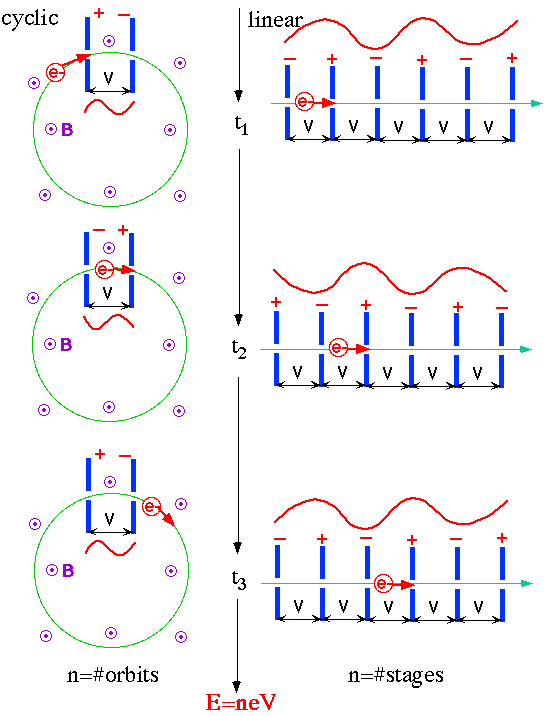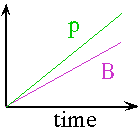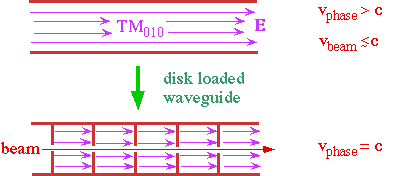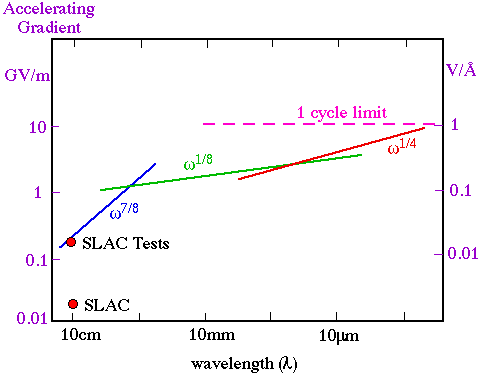
Repetitive Acceleration: Cyclic or Linear

In general, static magnetic fields are much stronger than static electric fields. The Lorentz electromagnetic force law
tells us that a 1 Tesla magnetic field exerts the same force on a relativistic particle (v@c) as a 3x108 Volt/metre electric field. This can also be seen by looking that the units, i.e.
Using the conversion constant c = 3x108 m/s, we have 1m/s = 1/(3x108), so
It is easy to generate a 10T (= 3x103 MV/m) static magnetic fields, but static electric fields above about 3 MV/m are almost impossible. This is because our world is made from particles with electric charge but no magnetic charge, so high electric fields are shorted out by sparks consisting of electrically charged particles. There is no known reason why magnetic charges ("magnetic monopoles") should not exist, and they probably do but very rarely and with masses of the order of 1015 GeV/c2.
Sychrotrons
B = p/(|q|r)

Effective Accelerating Gradient
length of accelerator |
for a synchrotron
| G | Emax/2pr | |||
| pmaxc/2pr (E>>m) | ||||
| \ | G (J/m) | |q|rBmaxc/2pr (SI) | ||
| |q|cBmax/2p | ||||
| \ | G (eV/m) | |q/e|cBmax/2p (1.6x10-19 = C/e = J/eV) | ||
| G | (48 MeV/Tesla)·Bmax |
e.g.
Tevatron: G ~ 150 MeV/m,
LHC: G ~ 250 MeV/m
Limits to circular accelerators
protons
-
size ($$)
-
B (Hc, stress µ
B2)
-
S/N (snew
~ 4p/E2,
sstotal
~ 102 mb)
electrons
-
synchrotron radiation
energy
loss / orbit
=
(4p/3)
e2 b2
g4/r
=
88.5x10-6
[E(GeV)]4/r(m)
e.g. 88.5 TeV/orbit if E=1TeV and r=1km
Acceleration by Electromagnetic Waves
Power per unit area of an electromagnetic wave (Poynting Vector)
In vacuum: Emax=cBmax, but E & B are 90° out of phase, so
So the maximum electric field is
e.g. 1020 W/m2 Þ Emax= 275 GV/m
But in free space E is transverse to the direction of propagation of the wave, so there can be no continuous acceleration, just oscillation.
Linear Acceleration

e.g. SLAC (e± linac)
Fermilab proton linac injector
Typical limits on accelerating gradients for copper structures (e.g. SLAC disk-loaded waveguide).

c.f. static breakdown voltage of dry air = 3 MV/m